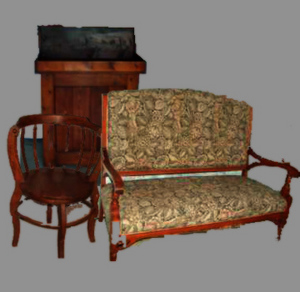Here you find the full History of Murano Glass
The first hand blown glassware into molds presumably made from clay, beared the double inscription in Greek and Latin characters, “Artas-Sidon” and later those of “Ennion”, “Meges”, “Neikaios”, etc. They are probable trademarks of Syriac workshops, rather than signatures of artisans, and the glass objects was implemented in simple shapes, prismatic or cylindrical, with or without handles, smooth or with embossed vegetable (similar to contemporary clay products of Samos), masks, toilet items, liturgical Hebrew furniture, so as to suggest, for these latter glasses, a Palestinian source.
They are mostly containers for ointments, perfumes, essences. But from the first to the fourth century of our era, the most important and original industrial product of the new technique is undoubtedly the bottle: for oil, for medicines, but mainly for wine, molded into rational shapes, practical, suitable for storage, packaging and transport.
The bottles are of two types: the one, cylindrical, with polygonal cross-section, rectangular or square, with a short neck and mouth widely lipped, all rather low in height with a typical wide handle, flat, in streaks, attached at right angles from only one side; the other, cylindrical, slender, with a dual band rings on top and bottom, and one or two handles folded as in previous, but more narrow. They were probably straw as our modern flasks.
The merit of the ancient Romans who had no particular inventive genius in the glassmaking (so much so that in the kilns of Campania region the formators performed even to perfection, copies of Syriac models) was to see in this industry arranged with a production “in series” of bottles, made possible by blowing into molds, a new source of wealth and know how.
Ancient Romans loved the gain and luxury, hence their passion for the “murrine” and the “diatreta” which we will discuss in a later article, and also for glass jewelry that will later be picked up by excellent European beadmakers who reinvented some inspiration from the ancient Roman colors in the famous glass beads for Pandora especially originating from Denmark and Italy.
They took advantage of this opportunity to organize and exploit this new industry in large part of their Empire with the skillness and resourcefulness of the pioneers, especially in the famous triangle Rhone-Rhine-Seine where in the second century the viticulture was introduced. No coincidence that the name of one of the greatest dynasties of glassmakers of this period, that of the Syriac Frontino, comes from Picardy nowadays in France, and that of another glazier, Julius Alexander a citizen of Carthage, who are descendants of the Syro-Phoenician, from Lyon.
With its bottles Rome opens the door of “Industrial Design” and of the production of useful forms for the needs of everyday life. After the Middle Ages also Venice in resuming the glass activity, will set up it, as we shall see, with perfect historical consistency on purely functional basis. With the introduction of freehand blowing, and the thinning of the thickness of the glass, the number of forms multiply, simple at first (first and second century of our era), then a lot more moved, lively and imaginative, some derived from the vessels in hard stones, others from the Greek ceramics and more from silverware, as they appear from the famous finds of Boscoreale, Hildesheim and Alesia.
Cinerary urns, bottles with handles in the shape of a dolphin, similar to “aryballoi” which were worn keeping them tied to the wrist, containing oils for anointing after swimming, bowls, cups and winged goblets (“pterota”), jugs, flasks, cups, some similar to the “cothones” used by soldiers and sailors, bottles with handles attached to a circle with the shape of the Greeks “diota”, containers of any kind with handles of different color.
The transparent glass is decolorised to look like real crystal, and similarly to the latter appears in the homes of the wealthy, where, as Pliny The Elder tells, supersedes even precious metals.


